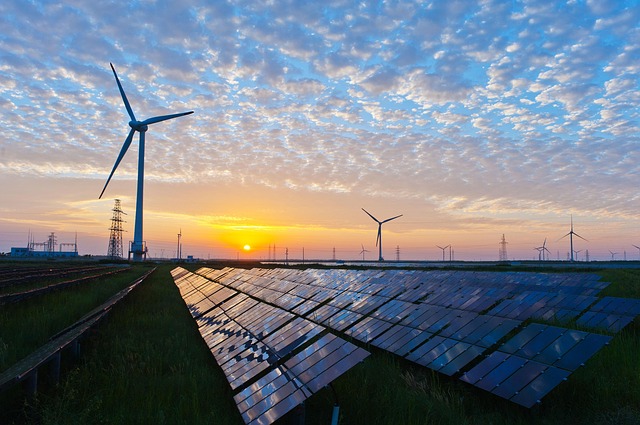
Transmission is key if the US is serious about becoming a nation powered by more renewable energy; new taskforce will work to overcome obstacles and barriers to key infrastructure build-out.
The Federal Energy Regulatory Commission (FERC) and the National Association of Regulatory Utility Commissioners (NARUC) today announced the formation of a joint federal-state task force on electric transmission, which FERC established by order issued today.
Members of this first-of-its-kind task force will explore transmission-related issues to identify and realize the benefits that transmission can provide, while ensuring that the costs are allocated efficiently and fairly.
The efficient development of new transmission infrastructure is essential as the nation continues to transition to clean energy resources. Federal and state regulators will be called upon to address numerous issues, including how to plan and pay for new transmission infrastructure and how to navigate shared federal-state regulatory authority and processes. As a result, the time is ripe for greater federal-state coordination and cooperation.
FERC’s order requests NARUC to nominate up to 10 state regulators to join FERC commissioners on the task force. All task force meetings will be open to the public and will use a dedicated FERC docket for this process to provide stakeholders and the public with the opportunity to comment for the record.
Specifically, the task force will seek to:
- Identify barriers that inhibit planning and development of optimal transmission necessary to achieve federal and state policy goals, as well as potential solutions to those barriers;
- Explore potential bases for one or more states to use FERC-jurisdictional transmission planning processes to advance their policy goals, including multi-state goals;
- Explore opportunities for states to voluntarily coordinate to identify, plan and develop regional transmission solutions;
- Review FERC rules and regulations regarding planning and cost allocation of transmission projects and potentially identify recommendations for reforms;
- Examine barriers to the efficient and expeditious interconnection of new resources through the FERC-jurisdictional interconnection processes, as well as potential solutions to those barriers; and
- Discuss mechanisms to ensure that transmission investment is cost effective, including approaches to enhance transparency and improve oversight of transmission investment including, potentially, through enhanced federal-state coordination.
“I am so pleased that FERC is joining with NARUC today to establish this joint task force to consider a variety of transmission-related subjects that will affect how successful efforts will be to build out the transmission grid,” said FERC Chairman Rich Glick.
“A big thank you to our friends at NARUC, including Idaho Public Utilities Commission President and this year’s NARUC President, Paul Kjellander, for their hard work in putting this task force proposal together. I’m looking forward to our joint meetings,” Glick added.
“Our partnership with FERC on this task force presents a much-needed opportunity for state and federal regulators to work collaboratively on transmission issues that affect all stakeholders,” said NARUC President Paul Kjellander. “Our shared authority over how to plan and pay for transmission infrastructure and the rapid pace of the energy transition have made such collaboration an imperative for all of us.”
Industry Reactions
Gregory Wetstone, President and CEO of the American Council on Renewable Energy (ACORE) commended the governing bodies. “By bringing FERC and state regulatory commissioners together on issues of shared jurisdiction, the Joint Federal-State Task Force on Electric Transmission can help identify obstacles and develop solutions for transmission development, and we look forward to seeing its recommendations,” he said in a statement.
“Ten years after being finalized, not one interregional transmission line has been built using the process established under Order 1000. With more interregional transmission, we can connect centers of high renewable resources with centers of high electric demand, enhancing grid reliability and dramatically reducing carbon emissions,” he added.
Sean Gallagher, vice president of state and regulatory affairs at the Solar Energy Industries Association (SEIA) said the move was critical to the success of Biden’s infrastructure plan.
“The reality is that we are going to need to add hundreds of gigawatts of solar and energy storage capacity to reach President Biden’s 100% clean electricity goal. We must also find a way to connect this load to the grid and deliver it to customers that want access to solar and storage. Transmission is going to be a critical part of this process, and this new partnership promises to help overcome the regional planning challenges associated with building the transmission capacity we need to meet our goals,” he said in a statement.





